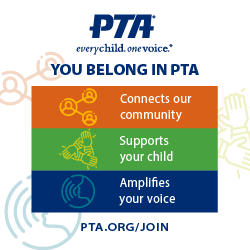Childhood obesity has become a major topic in our schools. According to the CDC, childhood obesity has more than doubled in children and quadrupled in adolescents in the last 30 years.
The long-term impact for our children is an increased risk of heart disease, Type 2 diabetes, stroke, several types of cancer and osteoarthritis (CDC). We have a unique opportunity to positively impact the future lives of children while they are in school by providing healthier school meals.
While some parents may not be as concerned for their child, this is an important issue because for many students school may be their only opportunity for consistent nourishment. This trend has been growing for several years, so it is imperative that we ensure all students have healthy choices during the school day.
We also need to educate students—and their families—on why these choices are important for their success at school and at home.
The arena of school food is complex. It is a program of limited funding, complicated nutrition regulations, training inconsistencies, logistical obstacles and negative associations.
The past three decades have showed us what can happen when school districts implement school food programs on these limited budgets—serving highly processed, unhealthy foods. Schools are working hard to offer good food but may be limited in options. Coupled with what students may eat outside of school, children will likely carry these health issues into adulthood.
We have an obligation and opportunity to change the course for our children. The Healthy, Hunger-free Kids Act of 2010 laid the groundwork for substantive changes in school meals policy. As of 2012, students are now offered more fruits, vegetables and whole grains at lunch.
And, the 2014 Competitive Foods Rule (“Smart Snacks Rule”) requires all vending machines, a la carte items, school stores and in-school food fundraisers to comply with nutritional standards.
There were concerns that these policies would result in a lot more food being thrown out. However, studies have shown that fruit and vegetable consumption gone up and waste has remained unchanged (Rudd Center report and Harvard School of Public Health).
In addition to the health impact of better school food for our children, there is another reason to support nutrition legislation: increases in academic achievement. Studies show that students who eat a balanced breakfast have improved test scores, lowered absenteeism rates, lowered disciplinary issues, among other positive academic outcomes.
It is imperative that we support policies that strive to improve the quality of school food.
But getting healthier food options at your school can be a challenging journey.
PTAs can have a lot of influence as they can work with schools to implement guidelines/unit policies in line with current legislation that impact the overall health environment in schools.
Some examples of PTA’s influence on food in the school community include:
- Sponsored teacher luncheons
- Meetings, classroom parties and other events
- Concession stands, booster clubs
PTAs can also support a school’s wellness committee by recommending a strong local wellness policy regarding food items that are marketed to our kids. The updated final rule from the U.S. Food and Nutrition Service on school wellness policies helps to support our efforts.
As parents in a PTA, we can have a profound impact on the health and well-being of our students and lay the groundwork for a healthy future.
Learn more about what National PTA is doing to advocate for important legislation affecting our children’s education and well-being. Then join our effort to advocate at your school, district and state level. Imagine the impact we can have for healthy kids and student academic success.
This article is the first in a series leading up to National PTA’s Legislative Conference, March 7-9, 2017. To read the second in the series, read Living with Columbine: My Mission to Protect Our Kids. To learn more about LegCon, visit PTA.org/LegCon.
JoAnne Hammermaster is the co-founder and president of Real Food For Kids and the Health & Wellness Chair of Georgia PTA.


















